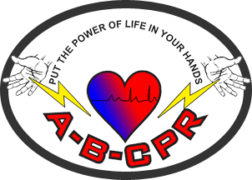BLS (basic life support) is the foundation for saving lives following cardiac arrest. Fundamental aspects of adult BLS include immediate recognition of sudden cardiac arrest and activation of the EMS system, early performance of high-quality CPR, and rapid defibrillation.
- Early recognition of sudden cardiac arrest in adults is based on assessing responsiveness and the absence of normal breathing. Victims of cardiac arrest may initially have gasping respirations (agonal respirations), which are not considered normal breathing. Normal breathing is a steady, consistent, rise and fall of the chest.
- In the old sequence of the A-B-C’s, the chest compressions are often delayed while the responder opens the airway to give mouth to mouth breaths, or retrieves a barrier device, or some rescuers are uncomfortable breathing all together and will not provide care. By changing the sequence to C-A-B, “C” being chest compressions first. Chest compressions will be initiated sooner and ventilations only minimally delayed. Studies have shown, good, strong, early compressions can give us better outcomes.
New 2010 guidelines:
- C- compressions
- A- airway
- B- breathing


Recent Comments